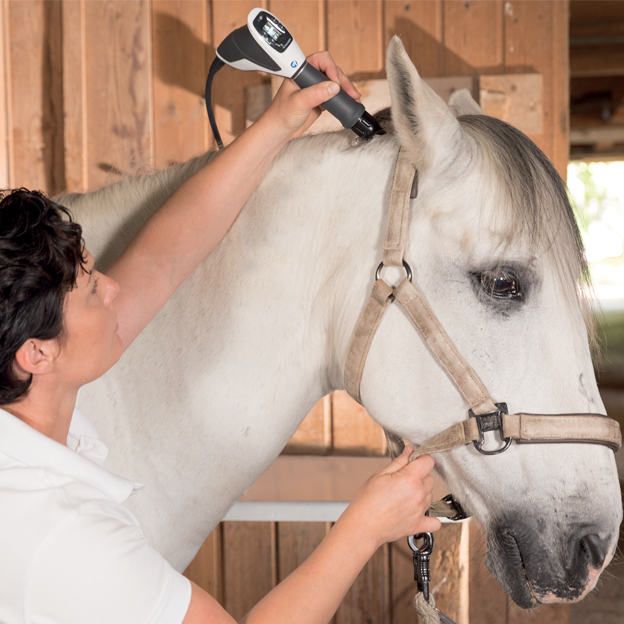Equine Therapy for Injury Recovery: Exactly How Equines Aid Heal Emotional Wounds
Equine Therapy for Injury Recovery: Exactly How Equines Aid Heal Emotional Wounds
Blog Article
Just How Laser Treatment in Equine Treatment Is Reinventing Vet Treatment for Equines
Laser treatment has arised as a transformative technique in equine vet treatment, giving a non-invasive service that quickens healing and enhances overall health. Leveraging exact light wavelengths, this innovative treatment promotes cellular regrowth, reduces inflammation, and mitigates pain. Its efficiency extends from musculoskeletal injuries to persistent conditions like osteoarthritis, substantially improving flexibility and life high quality for steeds. The mobility and versatility of laser treatment tools even more underscore their growing necessity among vets. As we discover the complex mechanics and real-world successes, the extensive effect on equine medical methods becomes increasingly obvious.
Understanding Laser Treatment

The modern technology behind laser treatment is grounded in the concept of photochemistry, where photons are absorbed by chromophores within cells, bring about raised ATP manufacturing and modulation of responsive oxygen species (Equine Therapy). This, subsequently, promotes cellular proliferation, lowers swelling, and speeds up healing. Vet experts utilize various types of lasers, including low-level lasers (LLLT) and high-power Class IV lasers, depending upon the particular restorative purposes and the nature of the equine condition being dealt with
Various laser wavelengths and power settings are meticulously picked to target numerous tissue depths and attain preferred clinical outcomes. Safety protocols are extremely important, as incorrect usage can cause thermal damages or suboptimal restorative effects. Thus, a detailed understanding of laser treatment's devices and applications is crucial for its reliable implementation in equine veterinary technique.
Advantages for Horse Wellness
The myriad advantages of laser therapy for equine health include boosted healing, discomfort decrease, and enhanced movement. This advanced therapy modality leverages particular wavelengths of light to pass through cells, boosting cellular function and promoting rapid tissue repair. The non-invasive nature of laser therapy makes sure minimal anxiety and discomfort for the horse, promoting a smoother healing process.
Boosted healing is one of the primary benefits, as laser therapy increases mobile regrowth and collagen synthesis. Discomfort decrease is accomplished through the anti-inflammatory effects of laser treatment, which reduces swelling and reduces the manufacturing of pain-inducing chemicals.
Enhanced movement is an additional critical benefit, particularly for performance and functioning equines. By decreasing inflammation and pain, and improving cells repair work, laser therapy helps in restoring joint function and muscular tissue flexibility. The advancing impact of these benefits is not only a quicker go back to regular activity however also an overall enhancement in the horse's lifestyle. Hence, laser therapy stands as a transformative tool in contemporary equine vet treatment.
Typical Conditions Dealt With
Laser treatment has emerged as a versatile treatment option for a selection of typical equine conditions. In addition, laser treatment is reliable for conditions like osteoarthritis, where it assists mitigate joint swelling and promote tissue repair.
Wound monitoring is an additional area where laser therapy has actually revealed considerable pledge. Chronic injuries or slow-healing ulcers can be specifically challenging in horses, yet laser therapy boosts cellular regeneration and enhances blood flow, therefore speeding up the recovery procedure. Additionally, laser therapies have actually pop over to these guys been successfully utilized in taking care of unguis problems such as laminitis and abscesses, easing pain and advertising quicker healing.

Modern Technology Behind Laser Treatment
Beyond the myriad problems treatable with laser therapy, the innovation itself values closer assessment. At the heart of laser treatment is making use of details wavelengths of light to permeate tissues and evoke biological actions. These wavelengths, usually ranging from 600 to 1000 nanometers, are precisely absorbed by chromophores in the skin, muscle, and other cells, instigating a cascade of cellular occasions.
Laser gadgets made use of in vet medication usually make use of low-level laser therapy (LLLT) or cold laser therapy. Unlike high-powered surgical lasers, these devices run at lower power levels, enhancing healing advantages while decreasing thermal damage. The energy from the laser light boosts adenosine triphosphate (ATP) manufacturing, enhances cellular metabolism, and speeds up tissue repair procedures.

Success Stories and Study

Showcasing the tangible advantages of laser treatment, many success stories and study illuminate its transformative effect on equine health and wellness. One such case involves a purebred racehorse struggling with persistent tendonitis. Standard therapies produced marginal improvement, yet after integrating laser treatment into the routine, the horse displayed substantial reductions in swelling and discomfort within weeks, eventually returning to affordable auto racing.
One more compelling example includes a dressage equine diagnosed with serious pain in the back, limiting its efficiency. A vet team utilized low-level laser treatment (LLLT) to target the irritated areas, causing marked improvement in flexibility and a visit their website remarkable decrease in pain. Over a number of sessions, the steed restored its peak type, showcasing the effectiveness of laser treatment in resolving musculoskeletal concerns.
Additionally, a study performed at a leading equine facility examined 50 horses with numerous soft tissue injuries treated with laser treatment. The outcomes were striking: 85% of the equines showed Full Report accelerated recovery times and improved mobility. These situations highlight the versatility and performance of laser treatment in equine medicine, using a non-invasive, scientifically-backed approach to enhancing recovery and performance in horses.
Final Thought
Laser treatment is transforming equine veterinary treatment by giving a non-invasive treatment that speeds up healing, lowers swelling, and eases pain. With its performance in dealing with a series of conditions, from bone and joint injuries to chronic conditions like osteo arthritis, this technology considerably enhances equine health and wheelchair. The transportability and adaptability of laser treatment better underscore its transformative effect on vet practices, solidifying its function as a necessary tool in modern equine medical care.
Report this page